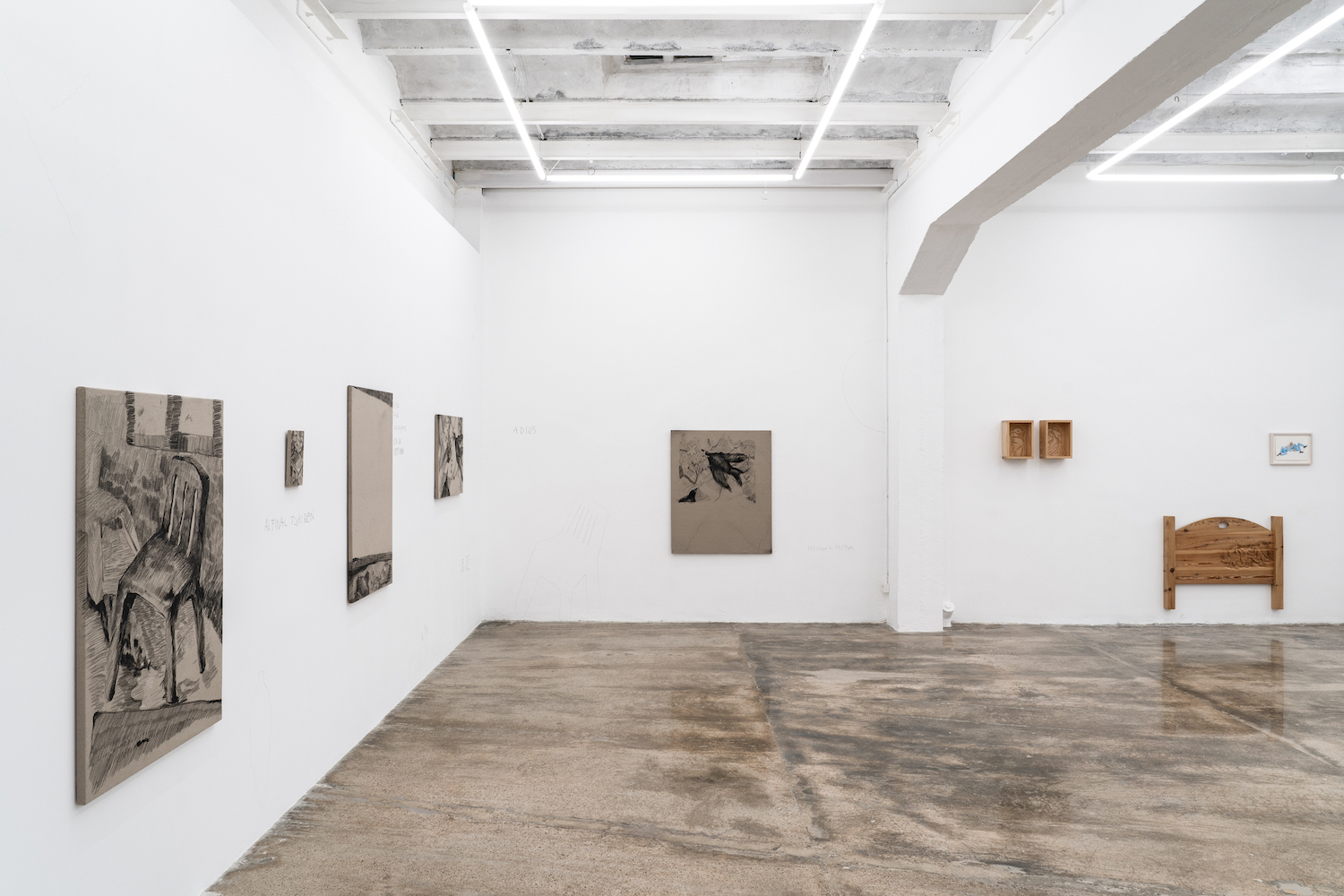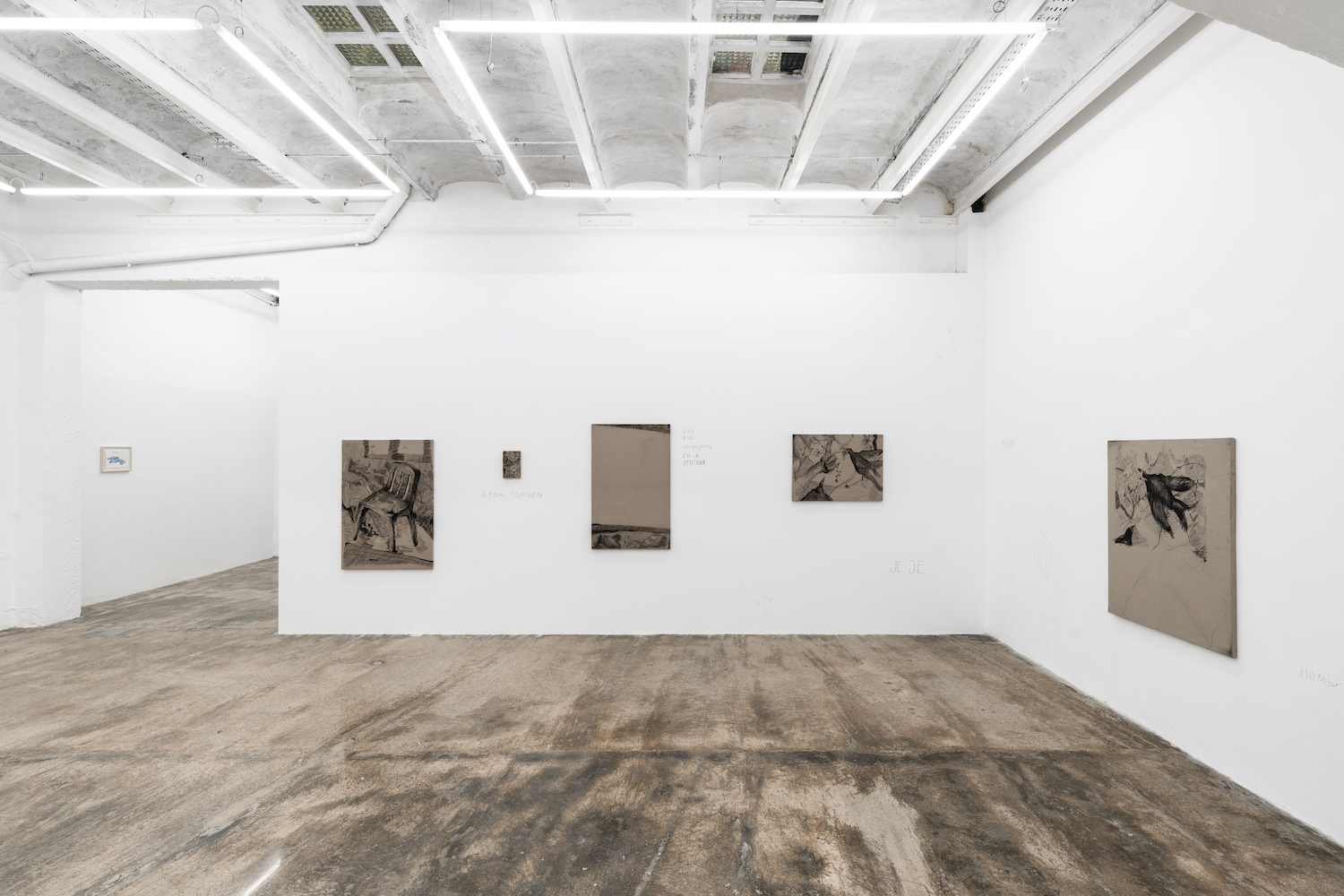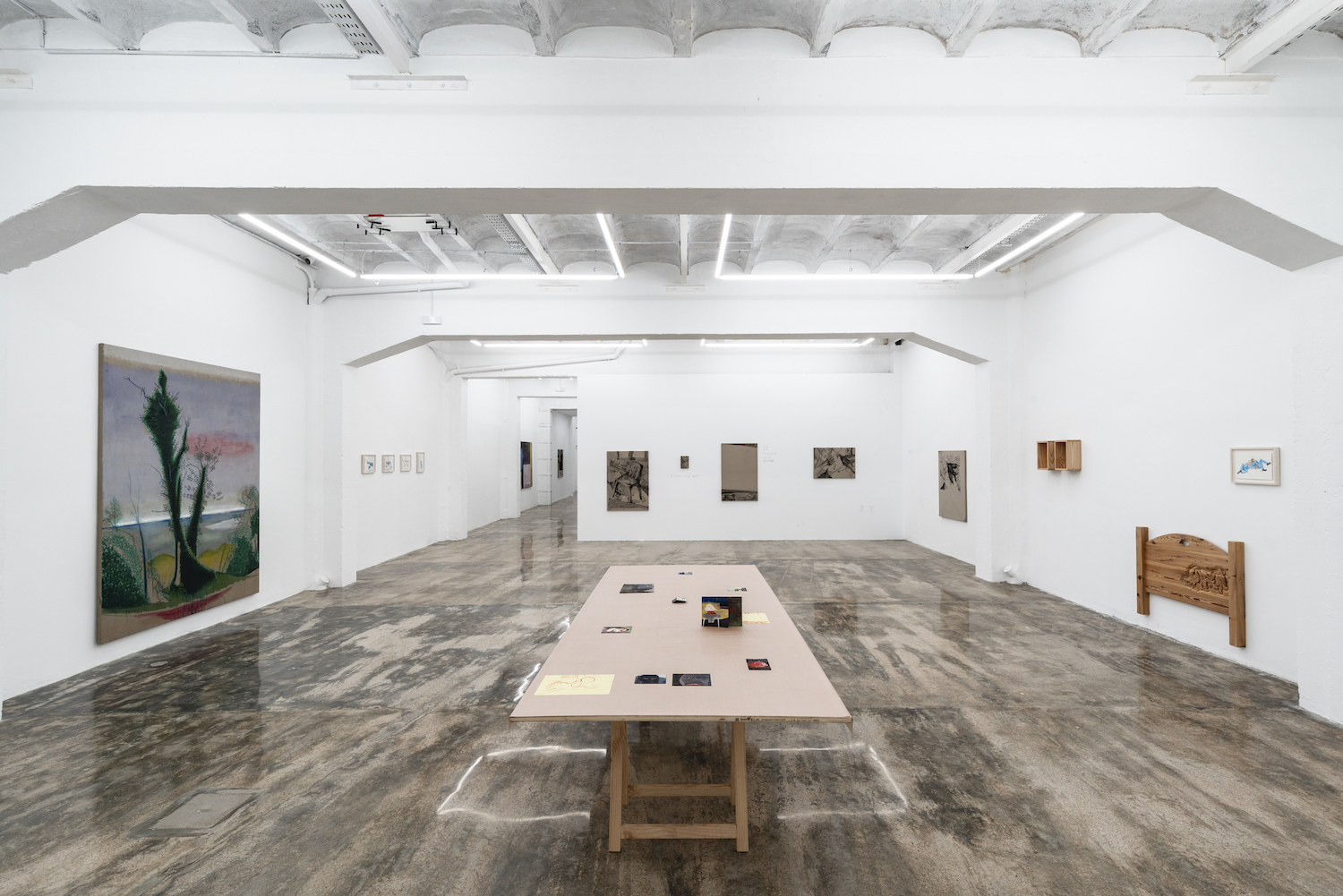Trazos y espacios
22.03 –– 30.05.2025
05.03 –– 09.03.2025 UNTITLED Art Fair Miami
04.12 –– 08.10.2024 FAIRY TALES
25.11.24 –– 24.01.25 SWAB ART FAIR 2024
03.10 –– 06.10 2024 GALAXY BALLROOM | NIT DE L'ART
21.09 - 15.11.2024 CAN ART FAIR IBIZA
26.06 - 30.06 2024 Space In Between | Art Palma Summer
06.06 –– 13.09.24 ARCOmadrid 2024
06.03 –– 10.03.24 ET FUGA | Art Palma Brunch
23.03 –– 31.05.24 MIENTRAS TU SUEÑAS
24.11.2023 –– 02.02.2024 SWAB Art Fair Barcelona (5-8 oct)
THE MELEE | NIT DE L'ART
23.09 ––10.11.2023 MALE MALE
23.06 ––15.09.2023 AMARILLO PÚRPURA - Art Palma Brunch 2023
25.03 –– 26.05 2023 True North
03.02 –– 17.03.2023 TERERÉ
11.11.22 –– 27.01.23 FLOOP
17.09 — 05.11.2022 Here We Go
09.07——02.09.2022
Traces and Spaces proposes the encounter of four artistic practices that, without having clear thematicaffinities, they do share certain formal features in their research on image and form. On the one hand, we find how artists work from the expanded idea of landscape, and how they make frequent use of fragmentation and repetition. We also see in their bodies of work an explicit intention towards plastic and material experimentation that leads them to propose new ways of practicing the medium of painting, drawing and installation.
The representation of landscape is a constant in the history of art. Artists have found in their environment a source of inspiration that serves them as a way of conveying their ideas and artistic concerns. Although we find motifs that refer to the natural/animal world throughout Prehistory and Ancient times, we see how in 15th century Europe onwards the presence of the landscape becomes increasingly prominent in religious and historical scenes, until it became a genre in its own right. In the same way, as cities and the urban fabric developed, they became a source of inspiration for artists, as did domestic interiors. Conceptual art, especially Land Art, as well as other contemporary artistic languages, often make literal use of the landscape, exploring ideas that correspond to the aesthetic, political, ecological or social realm. With the emergence of digital space, AI or hybrid technologies, the notion of landscape has extended beyond the limits of the sensible.
Juan Antón (Cue, 1976) is perhaps the artist who is closest to the landscape painting tradition. His exuberant works take as their starting point the beautiful natural environments that exist in the vicinity of his studio in Cue, Asturias. Without seeking to make a simple copy of the landscape, the artist focuses on certain motifs that catch his attention and that allow him to experiment with light and color, as well as perspective and composition. The work of Juan Antón brings us closer to the rural world where the landscape, far from being in its original form, serves as a backdrop for the encounter with the sphere of human activity; that is why his compositions indistinctly include crop extensions, sea views, or the geometries of a soccer field. The way he works the chromatisms as well as the use of scales, stresses such lack of interest in realistically capturing the environment; instead, the artist focuses on formal elements that brings him closer to artistic positions from previous generations. In particular, it is important to point out his use of the subjective plane that places the viewer within the scene which allows him to create immersive atmospheres and focus on a free interpretation of the compositional motifs.
Julio Varela’s (Buenos Aires, 1992) work is based on the idea that everything is landscape. Although his way of understanding landscape is deeply influenced by the Eastern tradition, which pays special attention to the pleasure of contemplation, the artist is also interested in the theatre of the absurd and contradiction. Landscape is not something to be admired “from the outside”, but rather it is something of which we are intrinsically part of. That is why, as it also happens in the work of Juan Antón, the perspective used places us, the viewer, within the scene, making us complicit in his vision. It is also true, however, that what one finds in this case are rather fragmented views, snapshots, cut outs of what could have been scenes but that have been truncated and reduced to recurring motifs such as the forearm of a character or the sporadic flight of a bird. This form of indeterminacy eliminates any hint of a narrative, leaving the viewer in forensic mode trying to complete the meaning of the scene, or else to find some clue that will allow them access to it. Suspending the meaning this way allows the artist to retain the viewer to focus precisely on the image and its formal qualities, which in his case is determined by an evident economy of means where the chromatic scale is reduced to the color black, the line stands as an elemental unit, and all of this is arranged on the raw surface of the linen. For this exhibition Varela has carried out an intervention on the wall on which he has added certain motifs and words that in some way accompany and connect with the canvases - more specifically, these graphics refer to the titles of the works, thus delving into the poetics between the image and the word. In this dual game between form and background, support and painting, it seems as if the artist extracted information from the painting and was giving us instructions on how decode the works.
weecolors’ imagery stands out for its warmth and tenderness while also taking us to the realm of eroticism and sensuality. With his characters of friendly nature and soft curvilinear shapes coloured in a cartoonish way, the artist opens the door to an affective world in which the world of animals, plants and humans intertwine, giving rise to intimate and humorous scenes, which include references ranging from romantic kitsch or soft-porn to cartoons or comics. weecolors also relies on fragmentation to avoid any linear reading, thus managing to focus our attention on the image. As he himself indicates, his intention is for the viewer to spend time with the image, and who knows if they may end up seeing themselves reflected in it. Although the “Marineros Descansando” series makes us think of the homo erotica of authors such as Tom of Finland, Kenneth Anger or Fassbinder, his characters are instead presented to us here at rest, smiling and absorbed as if everything was the result of a dream. The reference to bondage, or the scenes of intertwined swans carved on wood, leads us to ideas such as the vulnerability of the body as well as the realm of pleasure, intensity or the exchange that happens in intimacy. Through the work of weecolors the viewer glimpses a very unique emotional cartography with which the artist accommodates himself in the sensitive world that surrounds him.
Ander Sagastiberri (Bilbao, 1988) is interested in questioning the myth of painting and the established values that accompany it—from the idea of the image itself to the exhibition devices used by institutions linked to art. Automations rooted in the cultural realm but that in reality are nothing more than just that, pre-established conventions that accompany the pictorial medium. Sagastiberri seems to refer to what German artist Martin Kippenberger said that, the moment a work is hung on the wall of an institution or museum, it becomes part, or rather is trapped, in the cultural milieu that establishes the aesthetic and theoretical parameters on which art is produced and consumed, and ultimately, what defines the meaning of the work of art. As a counterpoint, Sagastiberri focuses on the domestic environment of the studio, more intuitive and organic than the institutional sphere, in which the “things” that happen are closer to the genesis of the works themselves. Something as simple as the accidental encounter of several works in a corner or a small canvas casually left on the work table, allows the artist to free painting from the heavy burden of tradition and experiment with it under other parameters. Although the exhibition has two large canvases that explore the possibilities of the medium in a rather traditional way, we see how smaller works are arranged on a horizontal plane, accentuating their objecthood, forcing the viewer to interact differently with the images. This paradigm shift continues in “Imitación a la vida” where the artist groups a series of small drawings on a transparent plaxiglass surface that automatically acquires its own logic and allows him to continue his investigation into the function and meaning of the pictorial medium.




